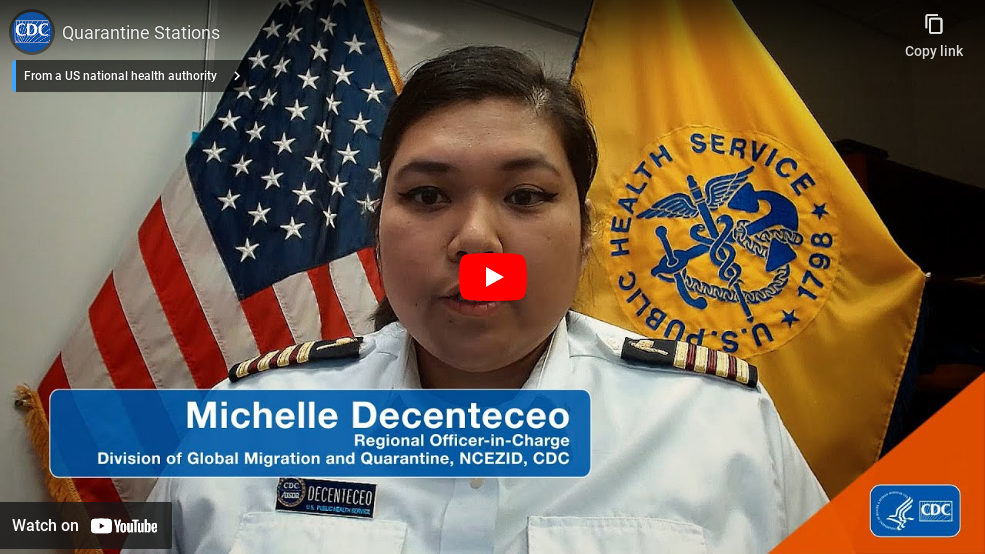Quarantine Stations
CDC’s Quarantine Network: First line of defense against infectious disease
As a regional officer responsible for overseeing operations at 4 of CDC’s 20 Quarantine Stations, Michelle Decenteceo never knows what each day will bring. On a typical day, her teams of quarantine public health officers may inspect a crate of turtles to prevent Salmonella importation or assess an ill passenger for signs or symptoms of a communicable disease. On rarer occasions, they might have to assess an entire plane of passengers who may have been exposed to an infectious person or respond to a shipment of prohibited animal products someone is attempting to import into the United States.
Each day can bring its own unique set of challenges, but Michelle and her teams at CDC’s National Center for Emerging and Zoonotic Infectious Diseases (NCEZID) work hard to use their available resources in ways that best protect the public’s health. For example, when a member of Michelle’s team received a call in the middle of the night that a patient in another state was diagnosed and extremely ill with botulism and in need of life-saving medication, the team member jumped into action. They raced to the airport and pulled the life-saving medication from CDC’s drug supply so it could be flown to the patient on the next flight, saving that person’s life from a deadly disease.

Michelle Decenteceo, MPH, Regional Officer in Charge,
CDC’s NCEZID Quarantine Branch,
Division of Global Migration and
Quarantine (DGMQ)
“We stand ready to respond to whatever comes our way.’’

DGMQ/Quarantine Stations: By the Numbers 2O22
49: Ports of entry with communicable disease response plans, developed and validated by CDC and partners, to better prepare the United States for future outbreaks
165: Life-saving drugs distributed from CDC Quarantine Stations to treat people with rare diseases
11,000: Travelers given a health screening upon entry into the United States from Uganda for the 2022 Ebola Outbreak in Uganda
The Chicago Quarantine Station, where Michelle is located, is one of 20 CDC Quarantine Stations strategically located throughout the United States at ports of entry where high volumes of international travelers arrive. This comprehensive Quarantine System serves to limit the introduction of infectious diseases into the United States and to prevent their spread. With the next outbreak only a flight or boat ride away, CDC’s quarantine network is critical to the nation’s ability to identify and respond to disease threats.

In 2022, the National Academies of Science, Engineering, and Medicine (NASEM) outlined the need for additional capabilities to ensure CDC’s Quarantine System can continue to respond to the increasingly frequent and complex emerging disease threats facing the United States. The NASEM recommendations included modernizing systems, technology, and communications with travelers and creating a Quarantine Station model that meets the expanding needs of a globally mobile world.
CDC’s quarantine network should be able to respond swiftly and effectively to the next disease threat. CDC and partners must continue to modernize and enhance the Quarantine System to better meet the needs of a rapidly changing global landscape.
CDC and partners are working to modernize data and surveillance systems, bolster the preparedness and response infrastructure, and strengthen the evidence base by evaluating interventions – all to create an effective and innovative Quarantine Station model that matches the expanding and changing needs of a globally mobile world.
CDC’s quarantine network and its frontline quarantine officers are critical to limit the introduction and spread of contagious diseases in the United States. This network must stand ready and have resources in place to respond swiftly and effectively to the next disease threat.
